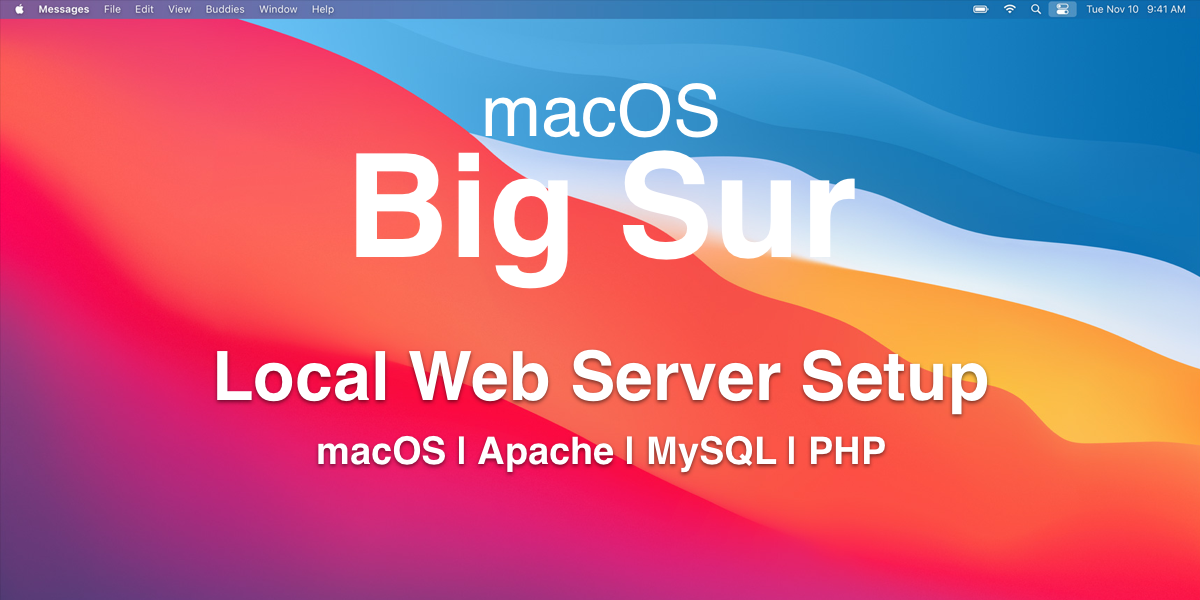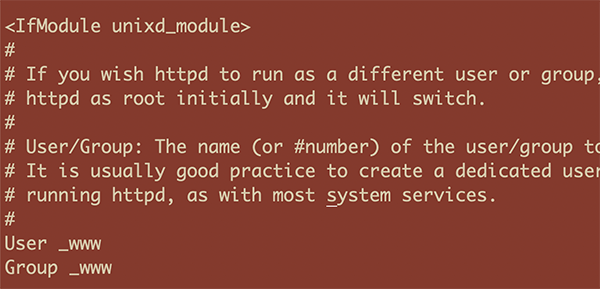


- #Mac os x apache virtual host for mac#
- #Mac os x apache virtual host mac os x#
- #Mac os x apache virtual host install#
- #Mac os x apache virtual host update#
- #Mac os x apache virtual host password#
#Mac os x apache virtual host update#
Apache has had 1 update within the past 6 months Enabling Apache and PHP on a Mac isnt.
#Mac os x apache virtual host for mac#
This comment has been Download Apache for Mac to set up your own web server. Just make sure you change the '8888' port to whatever port youre using on your system. Copy link Quote reply samheutmaker commented May 22, 2018. approx 20 add-on packages like Wordpress via Bitnami. If youre trying to configure an Apache NameVirtualHost on your system, if youll just copy the second configuration entry Im showing above and start with that, you should be fine.Control panel is simple start/stop/restart/configure.text file.No Preferences on the XAMPP manager-osx.app.After starting the Apache/FTP/MySQL services, quitting the XAMPP manager does not quit the services.(which is my current primary web), i have the following observations:
#Mac os x apache virtual host mac os x#
Relative to AMPPS Apache HTTP, MySQL, PHP, Perl, and Python web stack. Setting Up A Virtual Host (vhost) on Mac OS X and Gracefully Restarting Apache Web Server.
Copy your own Virtual Host into the file from this template:
Find your Virtual Hosts config, nf, you can comment out the two example Virtual Hosts in the file.
#Mac os x apache virtual host install#
(See the docs for the httpd program for other command line options).XAMPP v1.8.3 (PHP 5.5.11) will install an Apache HTTP, MySQL, PHP, and Perl web stack. Step 4: Configure your Virtual Hosts file. This guide is split into five simple steps. Everything you need to develop, deploy, and host reliable Web 2.0 applications is included. A collection of all steps necessary to use the Apache server that ships with Mac OS X for web development with PHP and virtual hosts. Mac OS X Server offers experienced webmasters support for using either Apache 2.2 or Apache 1.3 from within the Server Admin application. Careful examination of the IP addresses and server names may help uncover configuration mistakes. Using the build-in Apache in Mac OS X for PHP and Virtual Hosts. This command will dump out a description of how Apache parsed the configuration file. That is, type the following command: httpd -S The content well add to the configuration files will be the. For our purposes, the only difference in the two versions is the location of their configuration files. An IP-based virtual host configuration uses a separate server IP address for each website on the server. One is IP-based, and the other is name-based. There are two types of configurations for Apache virtual hosting. From Mac OS X 10.5 Leopard onwards, Apple ships Apache 2.2.x. Especially since these users don’t even need all the resources of a dedicated server. If you are trying to debug your virtual host configuration, you may find the Apache -S command line switch useful. In Mac OS X versions prior to 10.5 ('Leopard'), Apple uses Apache version 1.3.x. It can be handy if your config files are a mess.

#Mac os x apache virtual host password#
Changing the MySQL Root User Password in MAMP. donde nombresitio es el nombre de directorio que querramos crear. Also, it is possible to run a Node.js or Apache web server from your Mac, but you can just as easily run a similar web server on a Linux web host. Fixing WordPress 404 Object Not Found Errors on a Mac OS X Local Server Environment. Este paso a paso es extensible para cualquier sistema Unix, slo debes cambiar las rutas a tu directorio home de Apache, y de los ficheros de Log. Node.js is known to always be up-to-date for both Mac and Windows. Configuring Virtual Hosts in XAMPP on Mac OS X. You'll also know where each vhost is declared. Starting MAMP’s Apache and MySQL Servers at Login. This file should have some info about your org that will be used in. Remember do NOT enter a passphrase for this key - when prompted just leave it. You'll get a list of all the vhosts, you'll know which one is the default one and you'll make sure that your syntax is correct (same as apachectl configtest suggested by yojimbo87). We need to generate a key for the server. Here's a command I think could be of some help : apachectl -t -D DUMP_VHOSTS To list all virtual hosts, and their locations: # Red Hat-based (Fedora, CentOS) and OSX To check configuration files for syntax errors: # Red Hat-based (Fedora, CentOS) and OSX


 0 kommentar(er)
0 kommentar(er)
